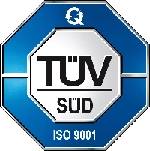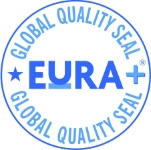In the Response hereby discussed, a professional association demanded some clarifications on the correct valuation of shares/other assets not traded on regulated markets, held in foreign, non-real-estate UCIs by individual residents in Italy.
These investment funds (so-called harmonized funds, compliant with Directive 2009/65/EC) are managed by management companies that, based on the investments made, periodically distribute the income generated in the form of:
- dividends, or
- capital gains at the end of the investment transaction.
This results in capital income for the recipients, with consequent obligations to declare and pay the applicable tax.
To this end, as noted by the applicant, investors pay a substitute tax of 26% on such capital income, report the purchase cost of the relevant units in section RW of the “Modello Redditi PF” (Income Tax Return for Individuals) or in section W of the “Modello 730” for monitoring purposes, and calculate the IVAFE (Tax on the value of financial products, bank accounts, and savings books held abroad).
The question submitted to the tax authority concerns the correct valuation of the units of such foreign funds, particularly with reference to compliance with the tax monitoring rules (Legislative Decree No. 167/1990) and the application of the IVAFE rules (Legislative Decree No. 201/2011).
Filling the RW section is, in fact, essential from two different perspectives:
- on the one hand, it serves for tax monitoring of foreign investments –that may be potential sources of income- held by individuals resident in Italy;
- on the other hand, it allows to calculate the IVAFE (where due), the quantum of which must be determined on the final value reported in the return for monitoring purposes.
How to calculate the IVAFE due?
The calculation method for the tax is indicated in Circular n. 28/E/2012, under which IVAFE is due at the rate of:
- 1 per thousand (1/000) for 2011 and 2012;
- 1.5 per thousand (1,5/000) for 2013.
These rates have been amended, and currently the tax is due at the rate of:
- 2.00 per thousand (2/000) for assets held in any foreign country (from 2014 onwards);
- 4.00 per thousand (4/000) for financial assets held in countries considered tax havens (as amended by the 2024 Budget Law, Article 1, paragraph 91, letter b).
The tax is payable proportionally to: a) the number of days the assets are held, and b) the value of the owned shares, in the case of jointly owned financial assets.
In the solution proposed by the applicant, specific reference is made to Circular No. 38/E/2013, which, in turn, refers to Circular No. 28/E/2012 on the taxable base for IVAFE, clarifying that in order to determine the initial and final value of the units, the following four hierarchical criteria should be applied:
- market value
- nominal value
- redemption value
- purchase cost — the latter to be used as a residual criterion only where nominal and redemption values are not available.
Invoking the inapplicability of the first three criteria, in the absence of the necessary data, the applicant proposed recurring to the residual criterion of the purchase cost which, in their view, was “the most objective value for assessing the investment.” Hence, the applicants submitted this interpretation to the Tax Agency requesting its validation.
For the sake of completeness, it should be mentioned that the applicant also sought clarification on which country to indicate for each investment fund in the relevant field of section RW (or section W), questioning whether it should be the country in which the investment fund is established or the country where the management company resides, considering the former to be more correct.
The Revenue Agency’s response confirms the taxpayer’s proposed solutions.
On the first point, the Agency deemed it correct to base the valuation of the investment fund units on their purchase cost, recognizing that nominal value or redemption value do not exist for these. It specifies that taxpayer obligations regarding foreign investment activities should be carried out according to the procedures outlined in Circular No. 38/E of 23 December 2013.
Finally, on the second point, it confirmed that the foreign country code should refer exclusively to the country in which the fund is established, not to the different country where the management company is located.



















